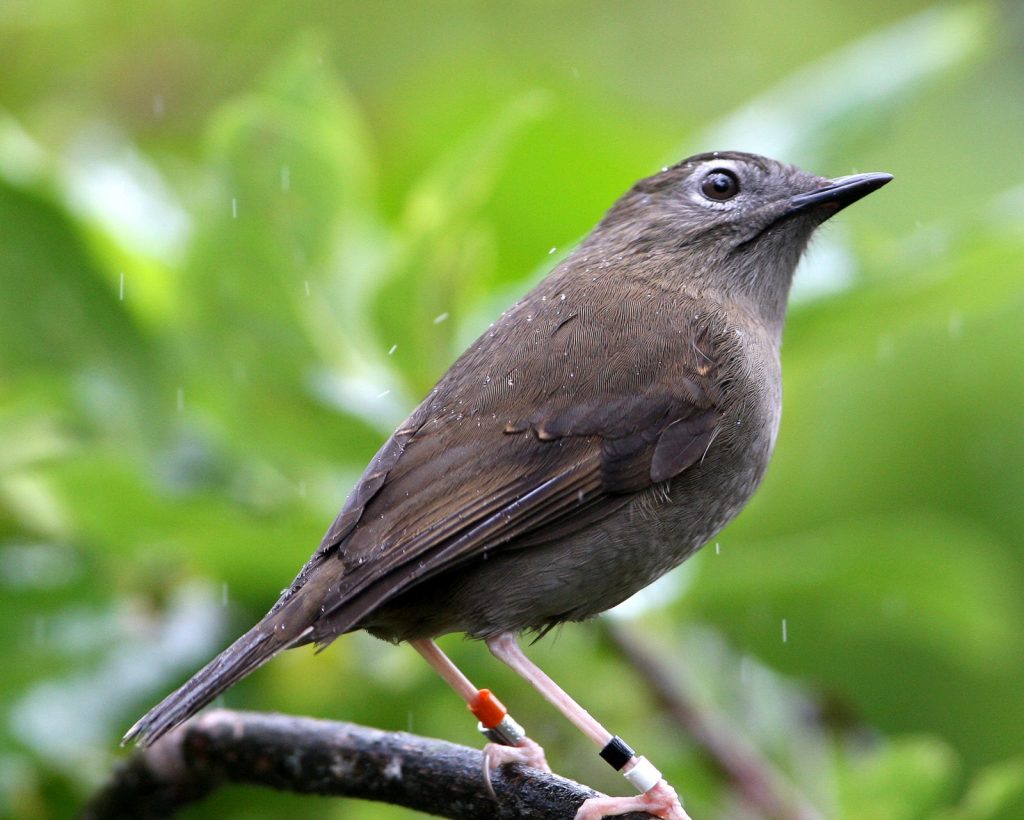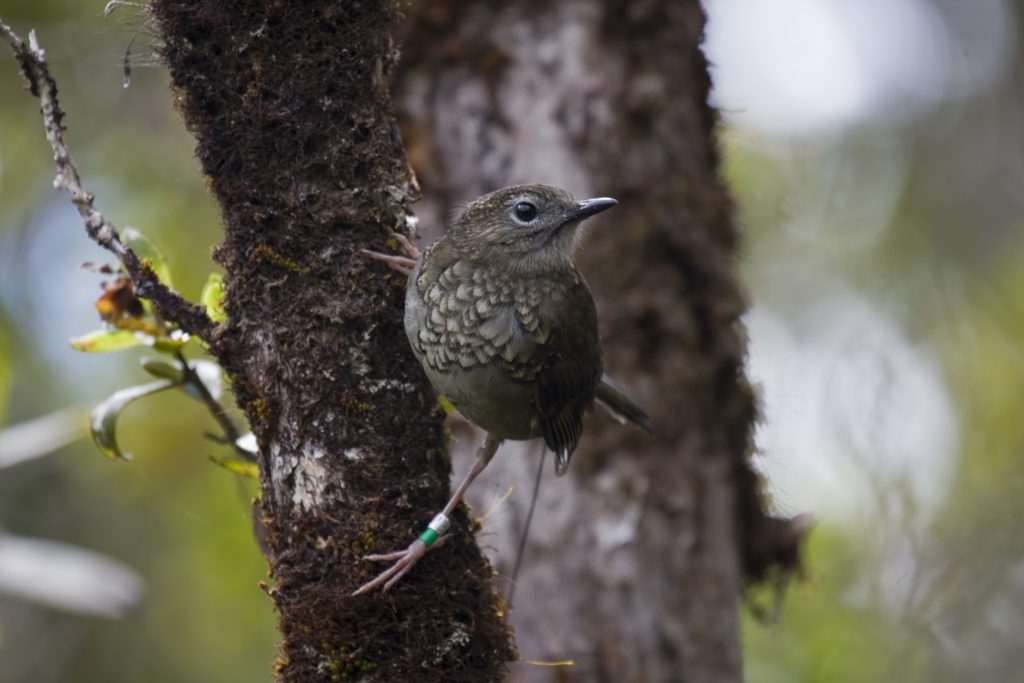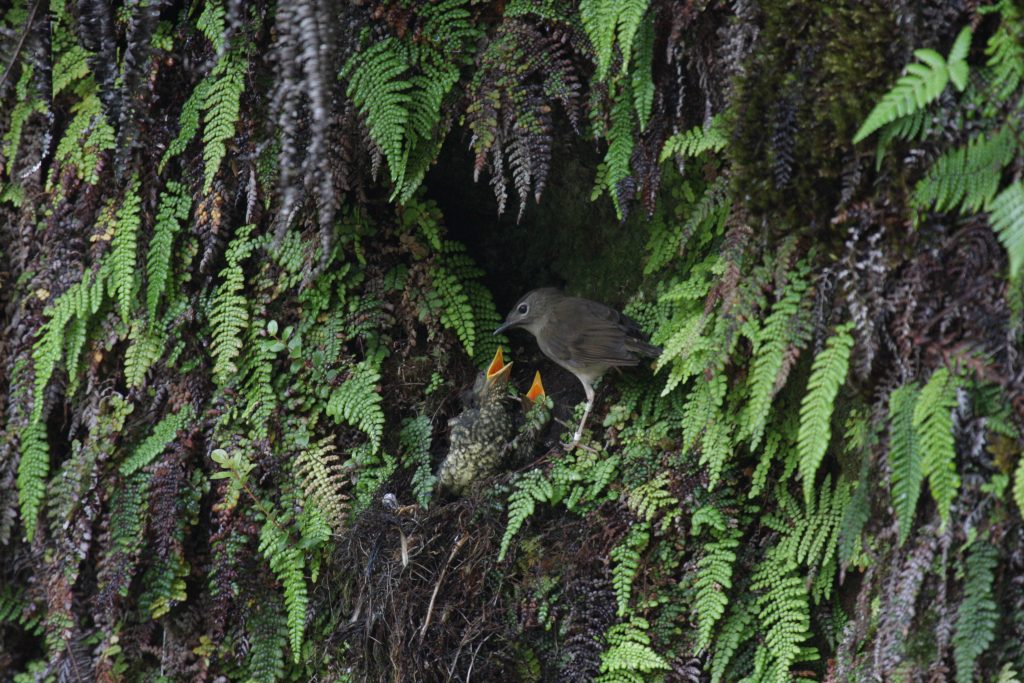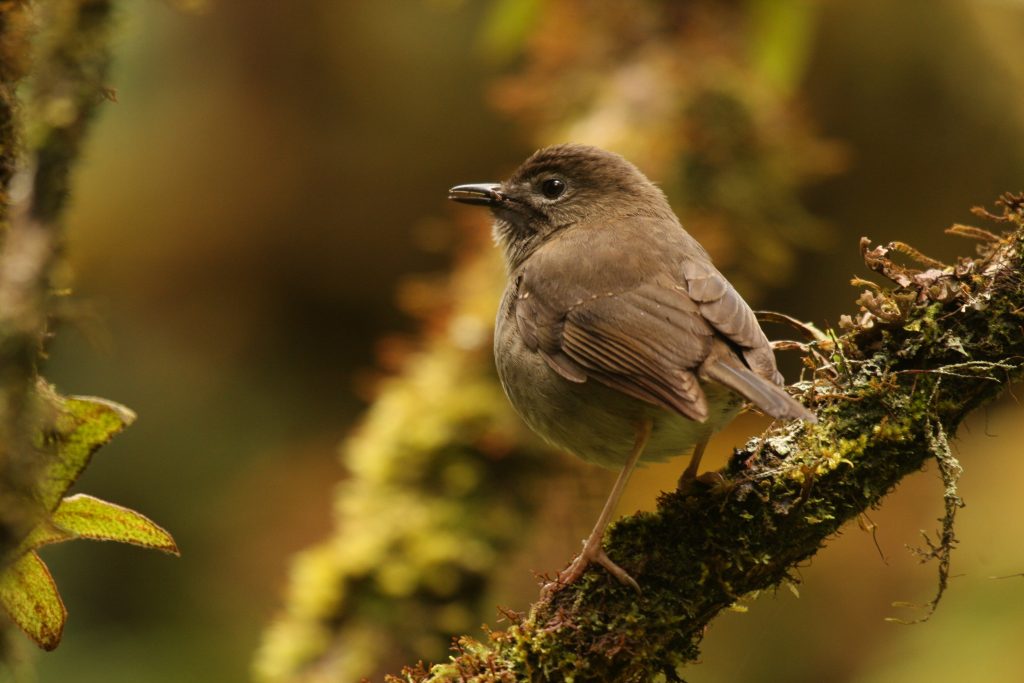Study Explores Native Bird Survival in Kaua‘i’s Forests
A new study from Kauaʻi’s Alakaʻi Wilderness Preserve has demonstrated how different types of management may enable the long-term survival of the Puaiohi, a critically endangered native thrush that is central to maintaining healthy native forests.
With fewer than 500 Puaiohi left in the wild, maintaining this small population of the last remaining native seed dispersing species is of particular importance.
Researchers at the University of Hawaiʻi at Mānoa and the Kauaʻi Forest Bird Recovery Project found that rat control, even at more conservative levels, appeared to be the most effective management method. Researchers also determined that management should focus on increasing female and juvenile Puaiohi survival, both of which are very susceptible to rat predation.
The study was led by Dr. Jean Fantle-Lepczyk at the University of Hawaiʻi at Mānoa, in collaboration with KFBRP and researchers at UH Mānoa. Fantle-Lepczyk was happy to find that, in addition to rat removal, other management options, such as providing nest boxes and supplemental food and improving native habitat, have potential to increase Puaiohi numbers.
The Puaiohi is also one of the last six endemic forest bird species to remain in Kauaʻi’s Alaka‘i Wilderness. Kauaʻi has lost five of its native birds in recent decades and those that survive are restricted to a small area of high elevation forest.
They are at risk from introduced predators, such as rats and feral cats, avian malaria, and habitat degradation due to feral livestock and invasive plants, in addition to natural threats such as drought and hurricanes.
Fantle-Lepcyk says, “This study shows that practical, attainable management activities can increase Puaiohi numbers and prevent the extinction of this unique endemic species. Because many of the issues facing Puaiohi are the same as those faced by the other Hawaiian forest birds, the recommended management activities could have a substantial and valuable positive impact on the other remaining endemic birds of the Alaka‘i.”
KFBRP Project Coordinator, Dr. Lisa Crampton, said, “This study is important because it helps justify the enormous time and effort KFBRP, its partners and the public (via the very successful “Birds, Not Rats!” campaign) is investing in rat control in the Alaka’i.

Puaiohi. PC: Mark Teruya via Hawaiʻi DLNR

Puaiohi. PC: Lucas Behnke via Hawaiʻi DLNR

Puaiohi. PC: Lucas Behnke via Hawaiʻi DLNR

Puaiohi. PC: Lucas Behnke via Hawaiʻi DLNR

Puaiohi. PC: Lucas Behnke via Hawaiʻi DLNR












